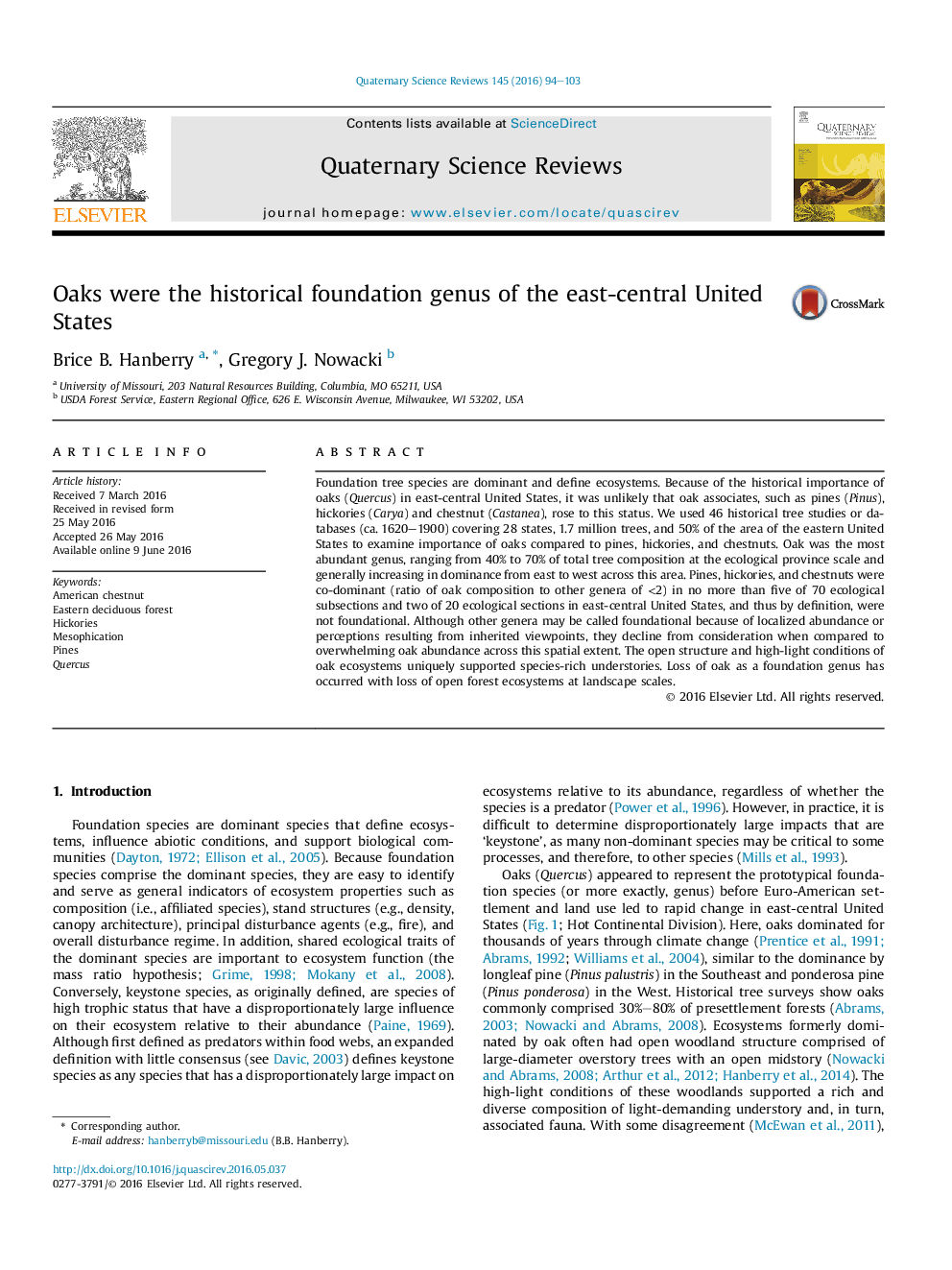| Article ID | Journal | Published Year | Pages | File Type |
|---|---|---|---|---|
| 6446029 | Quaternary Science Reviews | 2016 | 10 Pages |
Abstract
Foundation tree species are dominant and define ecosystems. Because of the historical importance of oaks (Quercus) in east-central United States, it was unlikely that oak associates, such as pines (Pinus), hickories (Carya) and chestnut (Castanea), rose to this status. We used 46 historical tree studies or databases (ca. 1620-1900) covering 28 states, 1.7 million trees, and 50% of the area of the eastern United States to examine importance of oaks compared to pines, hickories, and chestnuts. Oak was the most abundant genus, ranging from 40% to 70% of total tree composition at the ecological province scale and generally increasing in dominance from east to west across this area. Pines, hickories, and chestnuts were co-dominant (ratio of oak composition to other genera of <2) in no more than five of 70 ecological subsections and two of 20 ecological sections in east-central United States, and thus by definition, were not foundational. Although other genera may be called foundational because of localized abundance or perceptions resulting from inherited viewpoints, they decline from consideration when compared to overwhelming oak abundance across this spatial extent. The open structure and high-light conditions of oak ecosystems uniquely supported species-rich understories. Loss of oak as a foundation genus has occurred with loss of open forest ecosystems at landscape scales.
Related Topics
Physical Sciences and Engineering
Earth and Planetary Sciences
Geology
Authors
Brice B. Hanberry, Gregory J. Nowacki,
